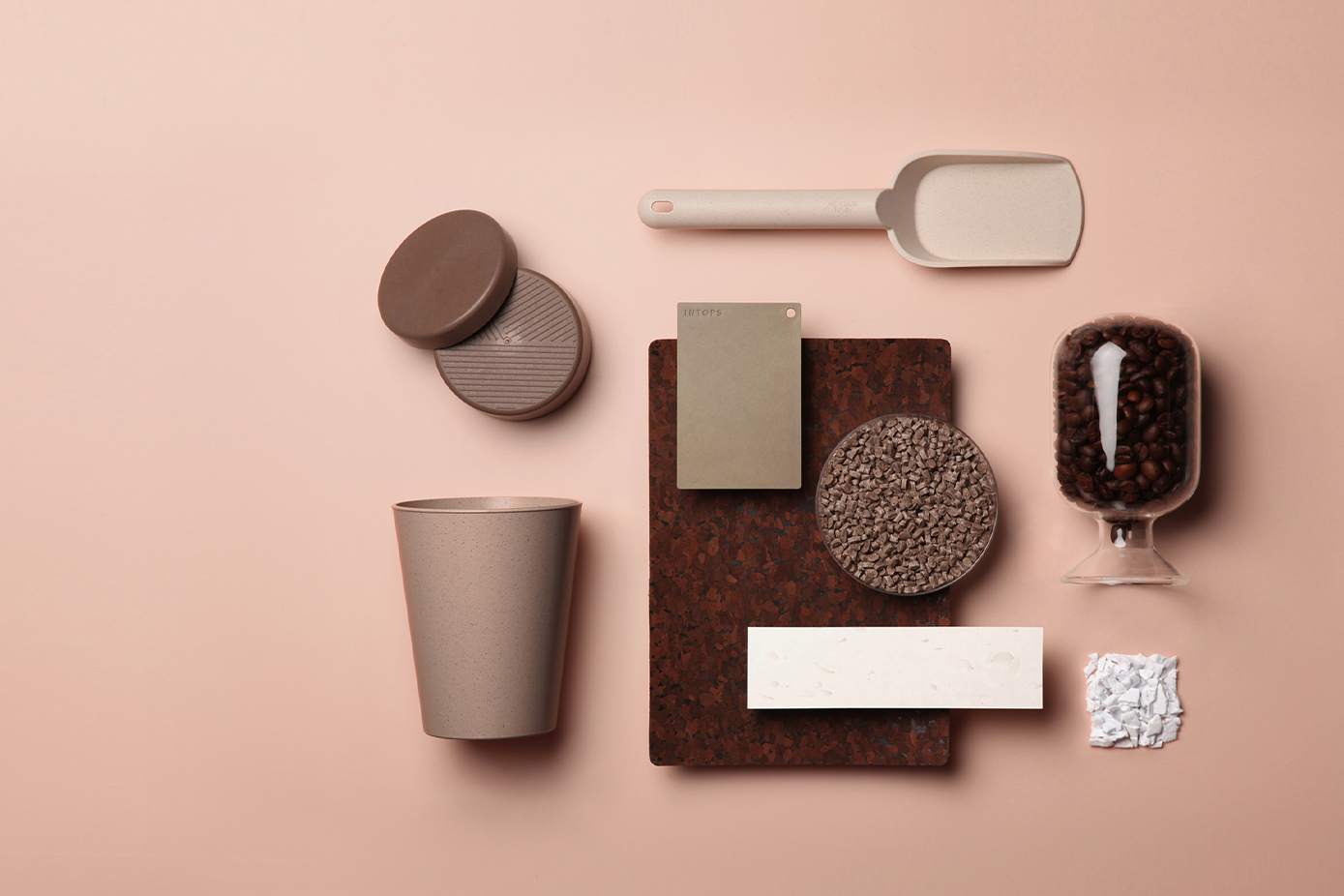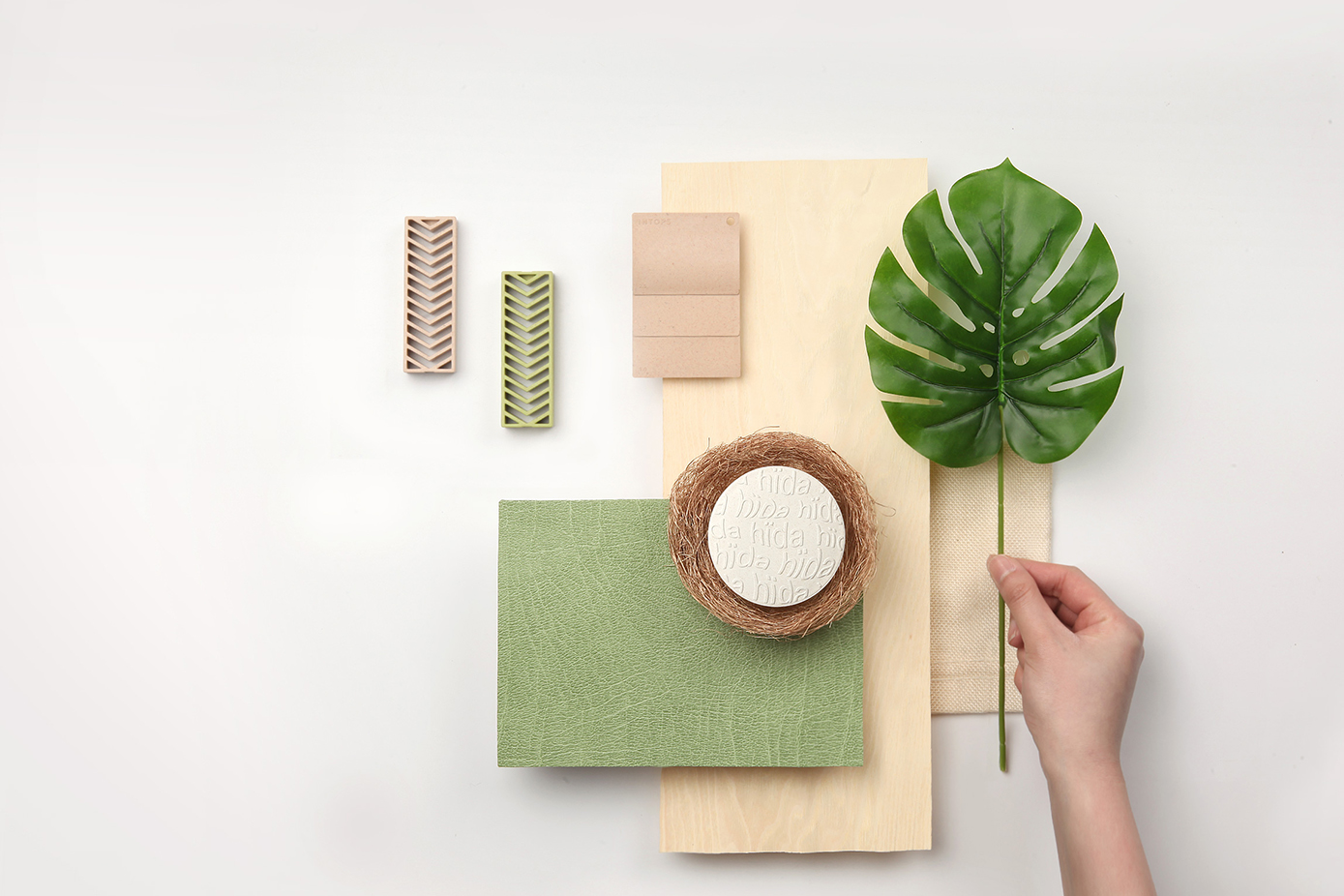-

This month's theme is "Sustainable". As movements and ideas for environmental pollution are building worldwide, the development of 'Sustainable Materials' continues in various industries. hida introduces some examples of upcycling discarded materials.
Upcycling Lighting, High Society

In the process of making favorite foods that we often drink, such as beer, wine, and coffee, leftover remains are produced. There is uniquely surface-patterned lighting made by compression molding after mixing these production wastes and hemp plants with special resins. The surface of this lampshade, which attracts attention with its luxurious and subtle color, is also coated with natural carnauba wax extracted from palm leaves.
Sustainable Hangers, Cortec

Cortec, a plastic hanger supplier, sorts and shreds discarded hangers by material, combines them with renewable fibers such as local natural grasses and uses them back as injection material. Together with Biowert, the company has developed a biomaterial (AgriPlast) suitable for hangers by combining cellulose fibers in grass leaves with recycled or biodegradable plastics. This material is much more heat-resistant than PLA made from corn starch and cheaper than cellulose acetate from wood waste.
Refillable Dispenser, Innisfree

Innisfree's eco-friendly dispenser, dreaming of a sustainable amenity, achieved a 30% reduction in plastics by developing a formula of 5% coconut shells and 25% inorganic materials. Inorganic materials created the luxurious ceramic tone for various purposes, such as a vase and toothbrush holder. The three-level separable inlet is designed for convenience with easy refilling and cleaning.
Eco-friendly Tower Blocks, Intops

Intops started a Revive Project to create new products from discarded materials through sustainable material research. The first product of the Revive Project, Tower Block, is a product reborn with eco-friendly resin developed using waste plastics, waste wood flour, discarded leather, and coffee grounds. One set of the tower blocks produces the effect of recycling 135 disposable spoons and reduces carbon dioxide by about 81% compared to manufacturing the same product with general plastic.

 Save
Save

